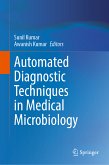Includes a description of the Alpha-, Beta-, Delta-, and Epsilonproteabacteria (1256 pages, 512 figures, and 371 tables). This large taxa include many well known medically and environmentally important groups. Especially notable are Acetobacter, Agrobacterium, Aquospirillum, Brucella, Burkholderia, Caulobacter, Desulfovibrio, Gluconobacter, Hyphomicrobium, Leptothrix, Myxococcus, Neisseria, Paracoccus, Propionibacter, Rhizobium, Rickettsia, Sphingomonas, Thiobacillus, Xanthobacter and 268 additional genera.
Dieser Download kann aus rechtlichen Gründen nur mit Rechnungsadresse in A, B, BG, CY, CZ, D, DK, EW, E, FIN, F, GR, HR, H, IRL, I, LT, L, LR, M, NL, PL, P, R, S, SLO, SK ausgeliefert werden.
From the reviews of the second edition: "Satisfyingly heavy and a pleasure to handle Volume 2 of the Second Edition of this highly respected work boasts a combined weight of more than 7 Kg. Their sheer size is a testament to the quantity of information contained inside. Each article is organized in a standardized way that helps make the information more digestible. The updated Manual has a place in all scientific libraries and its importance can only grow as we continue to explore and appreciate the vast prokaryotic diversity surrounding us." (Dawn Field, Microbiology Today, July, 2006)







